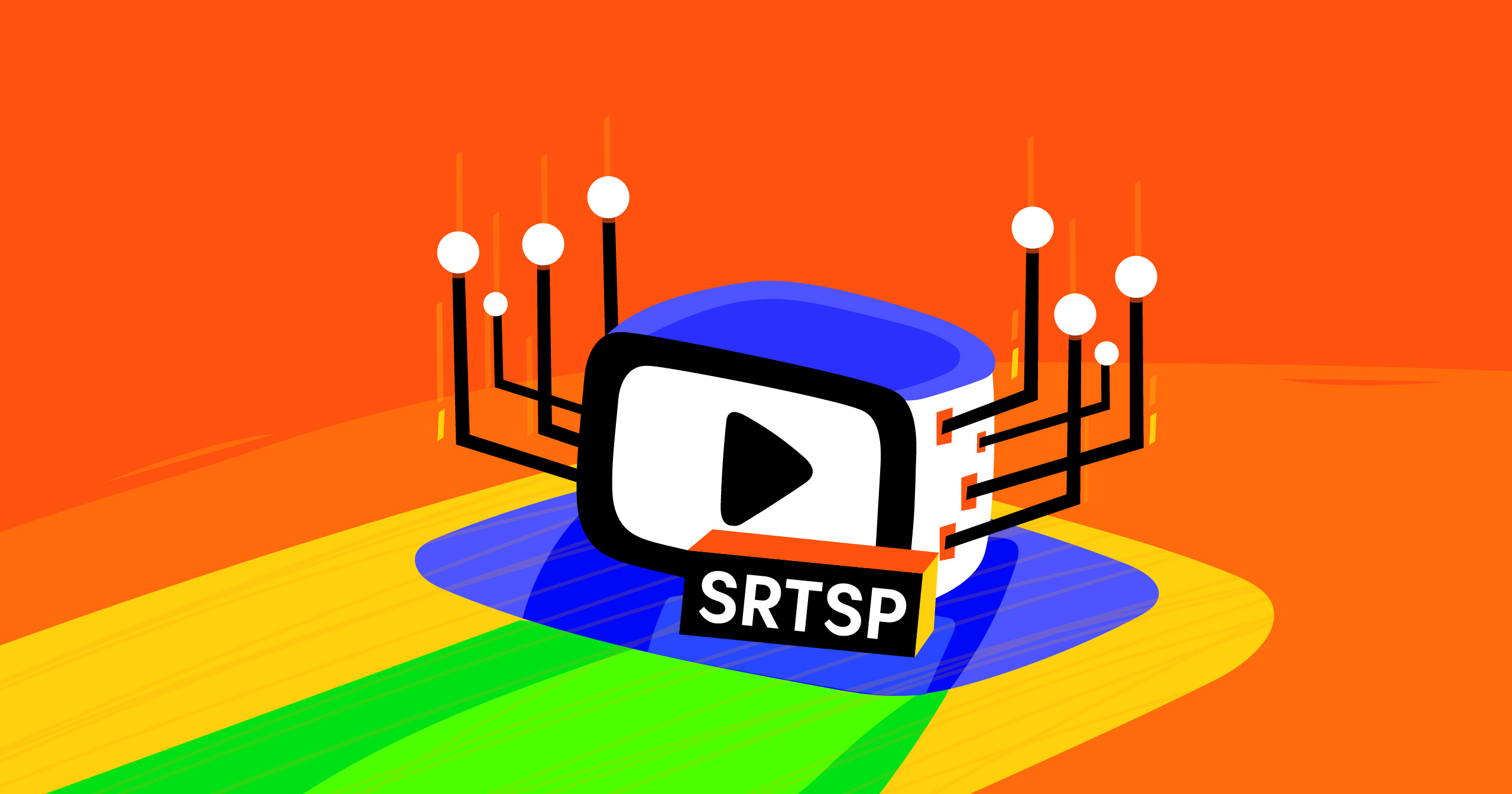SRTSP is a powerful extension of the widely used Real-Time Streaming Protocol (RTSP). It takes the best of RTSP and adds an extra layer of security to protect your streaming content from unauthorized access and potential threats. By offering encryption and authentication, SRTSP ensures that your streams are always safe and secure.
In this blog post, we will explore the world of Secure RTSP Stream (SRTSP) and learn its importance in maintaining streaming security. We will delve into the inner workings of SRTSP and discuss how it can help keep your streams safe and secure. Let’s get started to understand better the role of SRTSP in enhancing streaming security for all.
What is SRTSP?

SRTSP (Secure Real-Time Streaming Protocol) is an extension of the Real-Time Streaming Protocol (RTSP) designed for secure and reliable audio and video content streaming over IP networks. SRTSP includes features such as encryption, authentication, and error correction to enhance the security and reliability of streaming data. It is increasingly being adopted as a standard protocol in various industries, including entertainment, corporate communications, and security surveillance, where secure and reliable streaming is essential.
Encryption in SRTSP: The Key to Secure Streaming
SRTSP takes the safety of streaming to new heights by incorporating encryption methods such as Transport Layer Security (TLS) and Secure Sockets Layer (SSL). Let’s dive deeper into the world of encryption in SRTSP and discover how it ensures secure streaming.
Transport Layer Security (TLS) and Secure Sockets Layer (SSL) are two widely used security protocols that provide an encrypted link between the client and server. This link ensures that all data transmitted between them remains confidential and interference-free. By incorporating these encryption methods, SRTSP ensures your streaming experience is smooth and secure.
How Encryption Works in SRTSP
Secure Real-Time Streaming Protocol, or SRTSP, is a special method to protect videos and audio sent over the internet. Basically, SRTSP ensures that only the right people can access the content. It does this by adding extra layers of security to the regular way of sending multimedia, called Real-Time Streaming Protocol (RTSP).
First, SRTSP creates a safe connection between the person sending the content and the person receiving it. During this step, both sides share secret codes called cryptographic keys. These keys are important because they help to lock and unlock the content as it’s being sent.
After the safe connection is set up, the multimedia files from a Windows computer are prepared and changed into a format that can be streamed. Next, the content is locked using the keys that were shared earlier. This step ensures that the data stays safe while it’s being sent, as only the person with the right key can unlock and see the original content.
Norton protection file is another important part of making SRTSP safer. These files are like extra layers of security that can be added to SRTSP. They contain special rules, ways to lock the content, and methods to check who is trying to access it. Adding Norton protection files to SRTSP can provide even better safety features, like password-protected content, and better ways to ensure the person trying to access it is allowed.
SRTSP Workflow: How SRTSP Works

The SRTSP workflow establishes a secure connection between the client and the server. The client initiates the connection by sending an SRTSP request to the server. The server responds with an SRTSP response that includes the necessary security parameters, such as the encryption algorithm and key size.
Once the connection is established, the client sends a secure media description request to the server. The server responds with a session description that contains information about the media streams, codecs, and transport protocols.
After receiving the session description, the client program sends a stream setup request to the server. This request sets up the media streams and establishes the transport parameters for secure media playback using SRTSP.
With the media streams set up, the client sends a secure playback request to the server to initiate media file playback. The server sends encrypted multimedia data using SRTSP to transmit media data and control information. During playback, the client can send additional SRTSP requests to control the media stream, such as pause, rewind, fast-forward, and stop.
Finally, the client sends a secure session termination request to the server when the session is complete. The server then releases all resources associated with the session and closes the connection.
SRTSP in Different Streaming Scenarios
SRTSP can be implemented in various streaming scenarios to ensure secure and reliable streaming. Here are some use cases:
Live streaming events:
SRTSP can be used for live streaming events, such as concerts or sporting events, where low latency and high quality are crucial. It ensures that the stream is not interrupted by unauthorized access or tampering with hardware, providing a seamless viewing experience.
Video conferencing:
SRTSP can be used in video conferencing software to enable secure user communication. It helps to protect sensitive data exchanged during the conference from eavesdropping or interception.
Surveillance and IP cameras:
SRTSP can be used in surveillance and IP cameras to transmit real-time video streams with minimal latency and high quality. This makes it possible to monitor remote locations securely and effectively.
SRTSP and Other Streaming Protocols
SRTSP is one of several available streaming protocols, each with strengths and weaknesses. Here’s how SRTSP compares to other popular streaming protocols:
RTSP vs. SRTSP:
While RTSP provides basic streaming capabilities, SRTSP extends this protocol to provide additional security features such as encryption and authentication systems. This makes SRTSP a more robust and secure streaming protocol than RTSP.
SRTSP and HTTP Live Streaming (HLS):
Both SRTSP and HLS are designed for low-latency streaming, but SRTSP is more suitable for applications that require additional security features. HLS is commonly used for streaming video-on-demand and live video streaming but does not provide the same level of security as SRTSP.
Dynamic Adaptive Streaming over HTTP (DASH) and SRTSP:
DASH is a popular streaming protocol that supports dynamic bitrate streaming, allowing users to adapt to changing network conditions. However, it provides the user with a different level of security than SRTSP. SRTSP, on the other hand, provides enhanced security features while still delivering low latency and high-quality streams.
Benefits of SRTSP for Streaming
Regarding streaming, security is a major concern for both users and providers. SRTSP is an extension of the popular RTSP protocol, designed to enhance security and provide users with a more secure streaming experience. By adopting SRTSP, you can enjoy several benefits, such as:
- Enhanced security and data protection: With SRTSP, all data transmitted over the network is encrypted, protecting it from unauthorized access and ensuring that your content remains secure.
- Greater control over streaming content: SRTSP offers users greater control over their media streams, allowing them to pause, play, fast forward, and rewind the content, among other features.
- Compatibility with a wide range of devices: SRTSP is compatible with various devices, including cameras, smartphones, and media players, making it an ideal solution for many different streaming scenarios.
Conclusion
In conclusion, SRTSP is an essential security extension of the RTSP protocol, designed to protect streaming content from unauthorized access and manipulation. As streaming continues to grow and evolve, it is crucial to adopt advanced security measures like SRTSP to ensure the confidentiality and integrity of the content. Understanding the basics of SRTSP and its benefits can elevate your streaming strategy and protect your sensitive data streams from potential cyber threats. With its proven efficacy in various real-world use cases, SRTSP is undoubtedly the new standard in streaming security.









